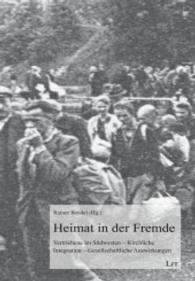Full Description
When the history of medicine in the latter half of the twentieth century is written, the advances in cardiovascular diagnosis, therapy, and prevention will stand out as one of the most important achievements. Although the age-corrected death rate secondary to coronary artery disease has declined substantially in industri- ized nations during this period, the prevalence of these conditions remains stubbornly high because of the aging of the population. Importantly, the incidence of coronary events and of one of their most important sequelae—heart failure—is rising ala- ingly in the developing world. When viewed from a global perspective, cardiovascular disease is assuming a progressively greater importance, and it is estimated that by 2025 it will be, for the ? rst time in human history, the most common cause of death. Clearly, rather than resting on the laurels of our achievements, an intensi? cation of the battle against cardiovascular disease must now be undertaken. Cardiovascular imaging will, without question, play a critical role in this battle. The appropriate sel- tion of therapeutic measures, be they pharmacologic, catheter-based, surgical, alte- tions in lifestyles, or some combination of these, depends on accurate assessments of both cardiac structure and function. Increasingly, the changes that dictate mana- ment are quite subtle and require a level of precision that was not available to cli- cians heretofore.
Contents
Instrumentation and Principles of Imaging.- Instrumentation and Principles of Imaging: PET.- Instrumentation and Principles of CT.- Integrated PET/CT.- Principles of Quantitation in Cardiac PET.- General Considerations for Performing PET and Integrated PET/CT.- Radiopharmaceuticals for Clinical Cardiac PET Imaging.- Iodinated Contrast Agents for Cardiac CT.- CT Anatomy of the Heart.- Patient and Occupational Dosimetry.- Diagnostic Approaches to Patients with CAD.- Patient Preparation and Stress Protocols for Cardiac PET and Integrated PET/CT Imaging.- PET and Integrated PET/CT Myocardial Imaging Protocols and Quality Assurance.- Myocardial Perfusion Imaging with PET.- Quantifying Myocardial Perfusion for the Assessment of Preclinical CAD.- Assessing Atherosclerotic Burden with CT.- CT Coronary Angiography.- Relative Merits of Coronary CTA and Coronary MRI.- Integrated Assessment of Myocardial Perfusion and Coronary Angiography with PET/CT.- Diagnostic Approaches to the Patient with Heart Failure.- PET Measurement of Myocardial Metabolism.- Myocardial Viability Assessment with PET and PET/CT.- Myocardial Perfusion, Viability, and Functional Assessment with Contrast CT.- Assessment of Myocardial Viability by Cardiac MRI.- Comparison of Imaging Modalities in the Assessment of Myocardial Viability.- Role of Imaging Cardiac Innervation and Receptors in Heart Failure.- Emerging Role of Molecular Imaging.- Evaluating High-Risk, Vulnerable Plaques with Integrated PET/CT.- Evaluating Vulnerable Atherosclerotic Plaque with MRI.- Evaluating Gene and Cell Therapy.- Imaging of Angiogenesis.- Case Illustrations of Cardiac PET and Integrated PET/CT.- Normal Vasodilator Stress PET/CT Study.







